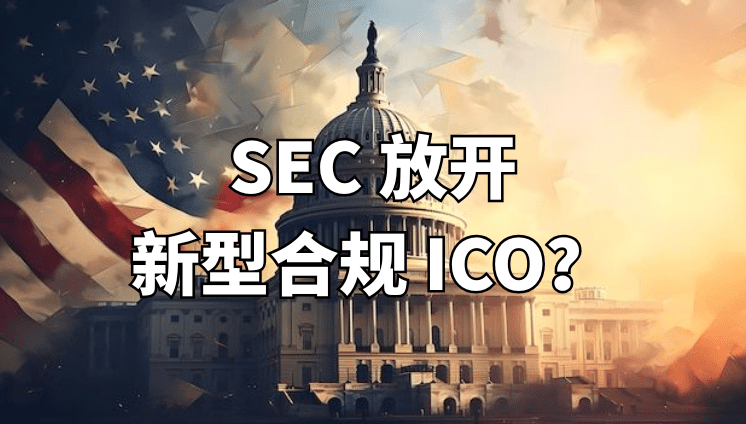Written by: AIGC
Translation: AI Editorial Department, Techub News

After years of regulatory ambiguity and legal disputes, the latest regulatory direction released by the U.S. Securities and Exchange Commission (SEC) may open a new growth cycle for the crypto market, especially proposing a more flexible and inclusive regulatory framework for core mechanisms such as initial coin offerings (ICO), decentralized finance (DeFi), and self-custody of digital assets, paving a clear path for compliance innovation in the crypto industry.
 1. The right to self-custody has been positively recognized by the SEC, benefiting U.S. crypto users the most.
1. The right to self-custody has been positively recognized by the SEC, benefiting U.S. crypto users the most.
The SEC's latest statement positively affirms the core position of digital asset 'self-custody' for personal property rights — this is part of the foundation of the U.S. free market. The SEC chair clearly stated that every user should have the right to decide how to hold and manage their crypto assets, including staking, trading, and other on-chain activities through self-custody wallets.
This attitude will greatly encourage the development of crypto applications based on individual sovereignty and create ample space for wallet developers and self-custody service providers. Users will no longer need to rely on centralized exchanges to participate in network governance, staking rewards, and DeFi interoperability, triggering a transformation in user behavior from 'access' to 'sovereign control' in crypto applications.
2. DeFi and AMM ecosystems gain regulatory tolerance, on-chain finance enters a gray area of compliance
For a long time, DeFi and automated market makers (AMM) could not be easily integrated into existing regulatory frameworks due to their decentralization and the absence of traditional financial intermediaries. However, the SEC has recently acknowledged that the design thinking of traditional federal securities law, which is based on intermediary governance, should not be forcibly applied to on-chain automated systems. This indicates that as long as the protocol has 'decentralization' and achieves a sufficient degree of autonomy and transparency, its developers are likely to receive prior compliance exemptions or safe harbor protections.
This shift means that developers no longer have to excessively centralize protocol technology just to adapt to regulatory mechanisms; instead, they can return to the original purpose of DeFi — defining trading rules through code. This will unleash significant innovative potential for core DeFi components such as AMM, market prediction, and lending protocols, while also reducing the legal uncertainties faced by U.S. development teams.
3. A new ecosystem for ICO compliance is emerging, and airdrops and network rewards will also benefit.
Perhaps the most exciting aspect is the SEC's new disclosure and safe harbor recommendations for three major methods of financing and token distribution in the crypto market — initial coin offerings (ICO), airdrops, and network rewards — aimed at establishing 'clear boundaries and operable' exemptions and compliance guidelines.
Under this new framework, legitimate ICOs and airdrops will no longer exclude U.S. investors due to compliance costs and litigation risks, but will have the opportunity to be reintegrated into the world's largest capital market. For startup protocols, this means they can incentivize contributors and community members through token models, while mobilizing capital early under compliance risk control.
Although the SEC has not yet released a complete case on specific disclosure standards, the overall thinking clearly points to: if future ICOs can disclose sufficient and transparent governance and have registered safe harbor procedures, they may gain regulatory tacit approval.
The Cambrian explosion of crypto innovation is about to restart.
When the SEC begins to consider providing a regulatory 'adaptation layer' from the perspective of mechanism design, rather than simply imposing traditional central regulatory logic on-chain, the innovative ICO, DeFi, and wallet layers of the new ecosystem are likely to re-explode. The future may no longer involve startup teams avoiding the U.S. market and choosing legally friendly offshore structures, but rather realizing a truly manageable, scalable, and decentralized crypto economic model under the SEC's leadership.
We may be witnessing a self-upgrade of regulatory policies — a regulatory dividend period that could ignite the next wave of Web 3 entrepreneurship.
